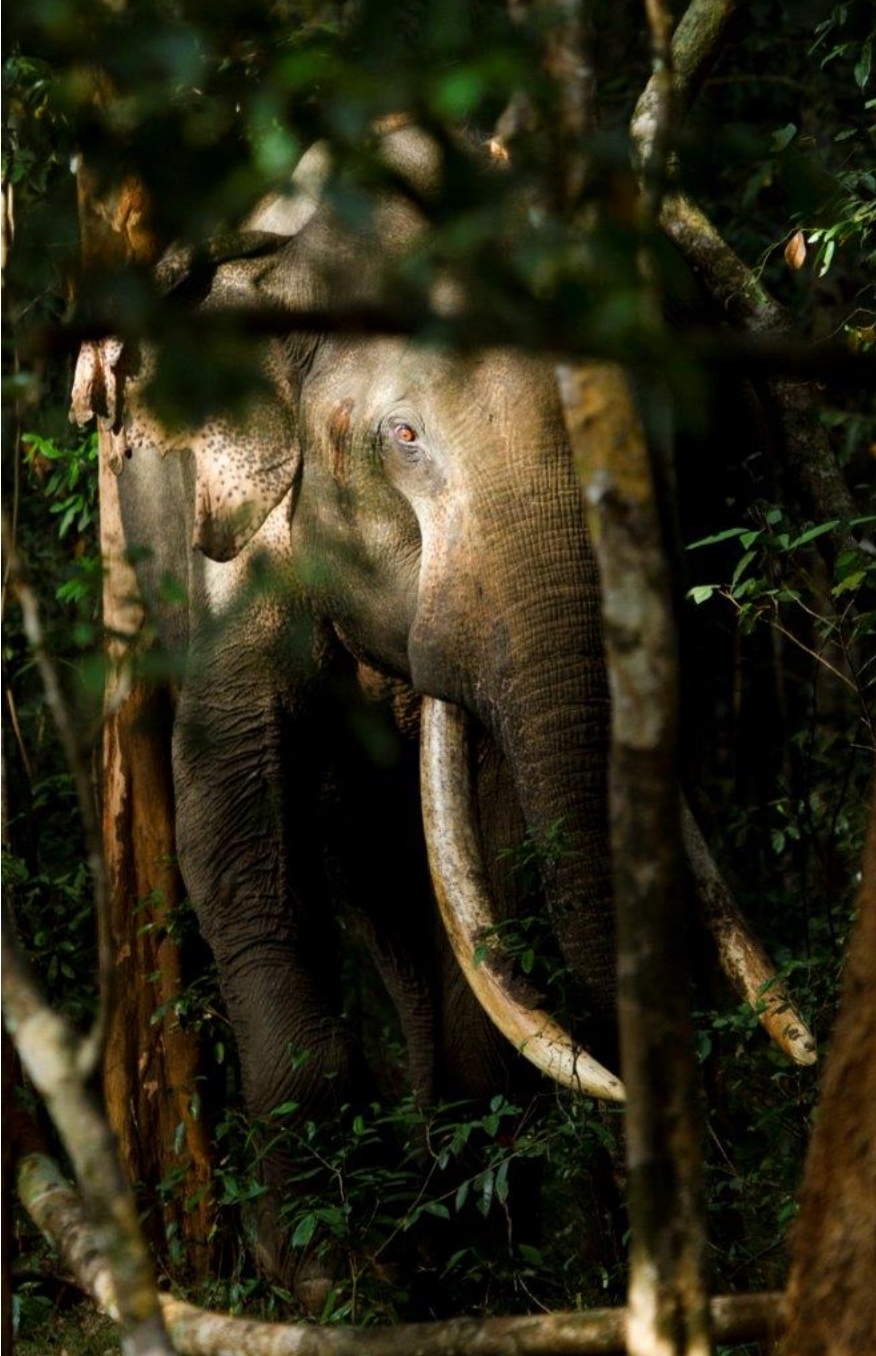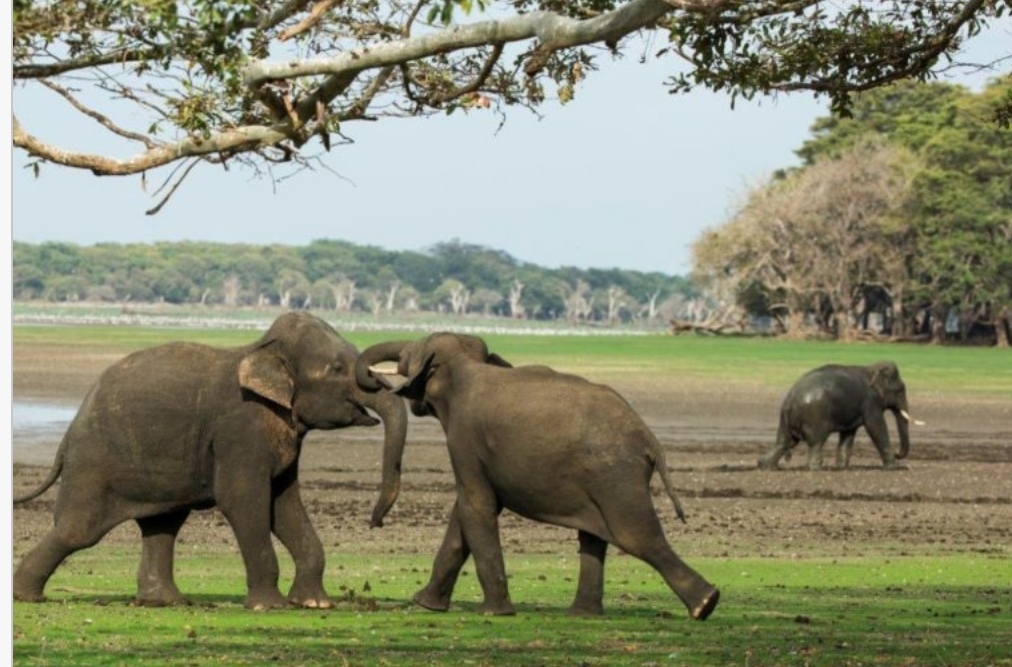In search of Sri Lanka’s vanishing tuskers

by
Rajiv Welikala
• Sri Lanka is home to an estimated 7,500 elephants, which is about 10% of elephants that live in Asia. They live on about 2% of the country’s land area, and a little more than 7% of male elephants bear tusks.
• Tuskers are exposed to more harm than other elephants, even though poaching for ivory is not common in Sri Lanka. As time has passed, seeing tuskers in the wild parts of Sri Lanka has become a rarity.
• More than 400 elephants have died in Sri Lanka in the past year. The country has the world’s highest number of elephant deaths and the second-highest number of human fatalities due to human-elephant conflict after India. Nearly two-thirds of Sri Lanka’s elephants live outside protected areas.
• The views expressed in this essay are those of the photographer, not necessarily Mongabay.
My love and passion for the wild elephants of Sri Lanka run deep within my veins, as deep as my love for photography.
Big males known as “tuskers” are a sight to behold in the wild. When he steps out of the forest canopy and into the sunlight, he strides along the plains like a colossus exuding absolute confidence and dominance over all before him. The female elephants rumble and trumpet in excitement, and the other males move away in fear. The tusker truly is the king of the Sri Lankan wilderness.

Gajaba is the largest wild tusker in Sri Lanka. He towers above other elephants and stands an estimated 3.1 meters (10 feet) at the shoulder. Sadly, he comes from a region where there is no more viable habitat left. As he and other elephants move from forest patch to forest patch, they are constantly chased, attacked and harassed by angry farmers.
Their remaining forests have been sold off to private companies for various large-scale agricultural projects, resulting in increased conflicts with the local farmers.
Throughout the years, Sri Lanka’s wild tusked males have been gradually diminishing for a variety of reasons. For several centuries, the elephants of Sri Lanka have been prized, and hence, many were exported to neighboring kingdoms. Tuskers were highly valued as beasts of war and considered culturally significant.
During colonial times, elephants were widely considered vermin and were killed by the thousands for sport and pleasure. Tuskers were an especially sought-after trophy.

Sumedha is a beautiful tusker from northern Sri Lanka. Seen during his period of musth, Sumedha comes out in search of potential mates. Once an upstart young bull, he is growing into a handsome tusker.
Post-independence brought in new challenges to the survival of these majestic beasts. Land management and development projects further marginalized wild elephant populations. Big elephant drives, undertaken in a bid to reduce human-elephant conflict have resulted in increased conflict with the elephants eventually returning to their home range.
Today, Sri Lanka, home to about 7,500 elephants (Elephas maximus maximus), but few are tuskers. Sri Lanka now mostly has tuskless bulls, known as makhnas in India, their iconic ivory having been lost through time.

The great tusker, Mahasen, is somewhat of an enigma. Once known only to a few and possessing an almost mythical status, he has the largest pair of ivory tusks of any known wild tusker alive on the island. Despite his imposing figure, he is timid and elusive. He disappears for long periods to unknown parts of the island and only appears during the month when he’s at the height of musth. Image by Rajiv Welikala.
Tuskers constitute only a tiny proportion of Sri Lanka’s elephant population and are largely scattered across the island’s dry and intermediate zones. To encounter one in the wild is an extremely rare experience, and when I do find one, the exultation I feel and the connection when making eye contact with him is beyond words.
As a photographer and elephant watcher, I sometimes feel that they are trying to tell me something. Perhaps they know that their days in this land are numbered and their future is uncertain. In their eyes, sometimes I see a deep sadness of loss that I feel they are trying silently to convey.

The tusker known as Megha was a legend in the national park he roamed. Known as a very shy and elusive bull, he often ran for cover upon being spotted and was very hard to photograph. Megha died in June 2020 after being injured by another tusker.
Elephant terrain
It may come as a surprise that the majority of tuskers, and elephants in general, are found outside Sri Lanka’s protected national parks and sanctuaries. These giants are scattered across small pockets of forests surrounded by an ocean of human settlements.
When I venture into certain areas in search of them, I am often taken aback by the fact that such large animals could live in such small spaces right next to busy, bustling towns. But this is the harsh reality faced by Sri Lanka’s dwindling elephant population.

Revatha, the great tusker, walking straight towards the photographer. Despite his short tusks, he has established himself as the most dominant bull in his home range in North Central province. Image by Rajiv Welikala.
In recent decades, elephant habitats have shrunk while thousands of human settlements have sprung up around or in the midst of elephant terrain. This isolation has resulted in the loss of lives, both human and elephant. Globally, Sri Lanka has recorded the highest elephant deaths and second highest human deaths, as a result of human-elephant conflict (HEC).
As the conflict has intensified, villagers have begun resorting to drastic means of retaliation, with loud, but generally harmless, firecrackers being replaced by homemade explosives, known locally as hakka pattas, placed inside bait such as cucumbers that injure the mouths of elephants. Often, such an explosion can lead to an astoundingly agonizing and drawn-out death as a result of the horrific injuries sustained.

Barana is a regal tusker and is just a few years younger than Revatha. He is also periodically seen in the same region when he is in musth. The beautiful golden light in the lake where he roams gives out an ethereal effect to the scene. Image by Rajiv Welikala.
On the other hand, villagers sometimes lose family members and constantly live in fear of elephant attacks.
Sri Lanka’s elephant population faces an uncertain future. Now, the question may be whether Sri Lanka’s development agenda leaves space for wild tuskers and other elephants. Will it be that the only remaining tuskers are the poor creatures who spend their lives in chains, and occasionally parade themselves wearing illuminated costumes to appease a nation’s view of culture?

A rare scene in the wild today: Two young tuskers are tussling for position in close proximity to a human-made tank with an older tusker in the background. An almost idyllic scene that encapsulates what the wilds of Sri Lanka should be throughout. Image by Rajiv Welikala.
The fate of the tuskers and all other wildlife lies in the hands of every Sri Lankan, not only the impacted villagers or those that are in power. It is within every one of us. The deciding decade is upon us, and the choice is ours to make.
Rajiv Welikala is a professional wildlife photographer who has been traveling and exploring the wild corners of Sri Lanka and the world for more than 20 years. He is one of Sri Lanka’s leading wildlife tour operators and organizes and guides photographic safaris worldwide. His passion for wildlife began at an early age, and his love for elephants — and tuskers in particular — is well known. Welikala has spent his life documenting and discovering the last remaining wild tuskers of the island, and working to protect and conserve them.




